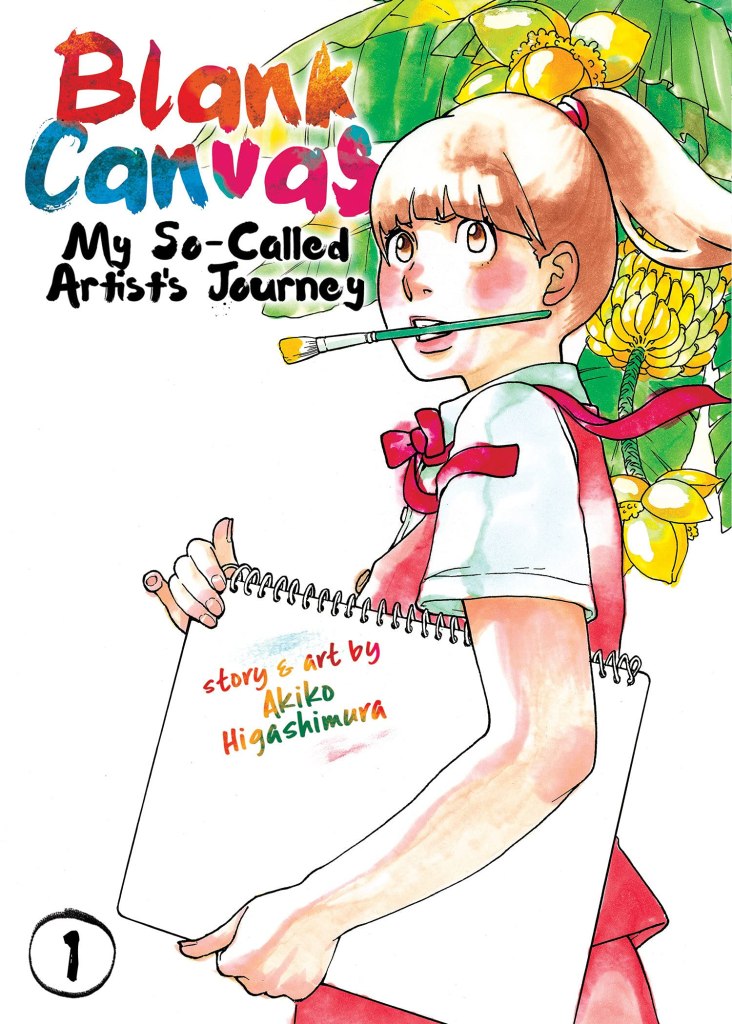I love the works of Higashimura Akiko. Whether it’s Princess Jellyfish, Tokyo Tarareba Girls, or even the recent Webtoon A Fake Affair, her stories about women feel utterly authentic even as they can sometimes dip into the realm of the fanciful. But Blank Canvas: My So-Called Artist’s Journey is a little different from these other titles: an autobiographical series about how Higashimura herself became a renowned professional manga artist. Rather than some self-aggrandizing memoir, however, it declines to pull its punches by conveying the sacrifices she made, for better or for worse, to get to where she is.
Titled Kakukaku Shikajika (“And So On and So Forth”) in Japanese, Blank Canvas traces Higashimuta’s path starting from her days as an overconfident high school student assured that she’ll be the next big manga artist. Her plan to get into an art college and use that as a platform to launch her career leads Higashimura to her first art teacher, Hidaka-sensei: an expectations-defying hothead of an old man who runs his own independent class and constantly pushes his students to just keep drawing no matter what. From art lessons to art school to her first published manga and more, Higashimura lays out the strange-but-profound relationship the two of them share.
I myself attended a fine arts school but ultimately did not end up in a career directly tied to that particular world, and there are definitely elements of Blank Canvas I can relate to—particularly in terms of remembering the greater talent and hard work that I would see in my peers. I may even still have trouble honestly assessing how much of the opportunity I squandered versus how much it benefited me, but when I read Higashimura, I can feel the harsh yet fair weight of her self-assessment, as she emphasizes just how much Hidaka’s teachings stuck with her. Through the ups and downs of Higashimura’s artistic life, including a mentally and emotionally draining struggle between her “fine arts” side and her “manga” side, her teacher’s lessons (both in life and in art) crop up as both sources of inspiration and dread.
Hidaka-sensei is definitely a character, and reading it made me think about how differently people can be built both inside and out. Hidaka-sensei is portrayed as someone who would berate and even physically hit his students, but was nevertheless confident that anyone who put in the time with him would improve. The mix of faith and Spartan training is an odd combination, and I could see it being actively harmful to certain types of artists. Yet, Higashimura makes it clear that this helped her greatly, even if she didn’t always want to admit it.
The series also provides insight into the kinds of manga that influenced Higashimura, and it makes me interested in looking deeper at the shoujo magazine that inspired her the most: Bouquet. If the series found in Bouquet are part of the reason we got the artist of Princess Jellyfish and all these other great titles, they’re even more worth reading in their own right.
Blank Canvas is complete at five volumes, and its combination of levity and brutal honesty are hard to forget. I feel like it’s just as likely to convince someone to become a comic artist as it is to get them to rethink that career choice, but more importantly, it’s a gradual and thorough processing of all a life has to offer—the beautiful, the ugly, and the realization that it’s easy to mistakenly assume which is which.


I felt the same way when I read Blank Canvas. I love to read Artist’s Own Stories. There are not too many so realistic and honest as Higashimura Akiko-sensei.
.
I read Princess Jellyfish online and I read Blank Canvas there as well and that is why I bought it in English translation of course. I think comparable stories are told in the 4 volume “Showa History of Japan” by Shigero Mizuki and “A Drifting Life” by Yoshihiro Tatsumi.
I was not so happy with “Tokyo Tarareba Girls” but then I am 84.5 YOA and it is a bit hard to connect with youthful pursuits and concerns though when I was under 40 it might have been easier when but I stopped drinking when I was about 30 years old so my POV is a bit different.
bliss
LikeLike
Pingback: The Tools to Express Yourself: Blue Period | OGIUE MANIAX